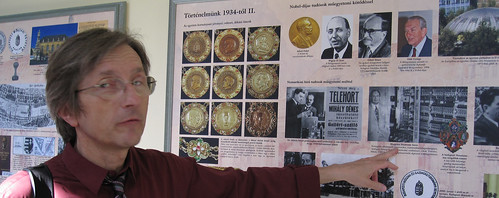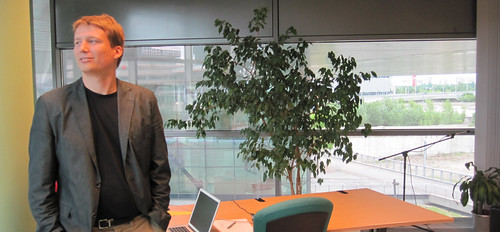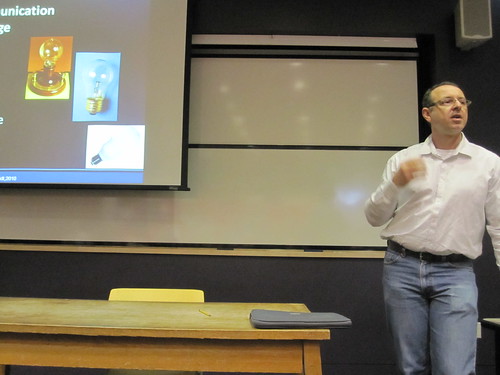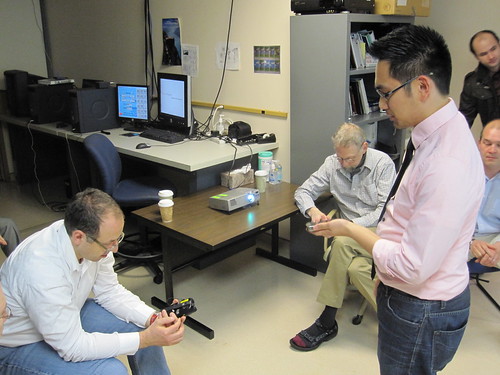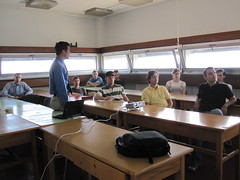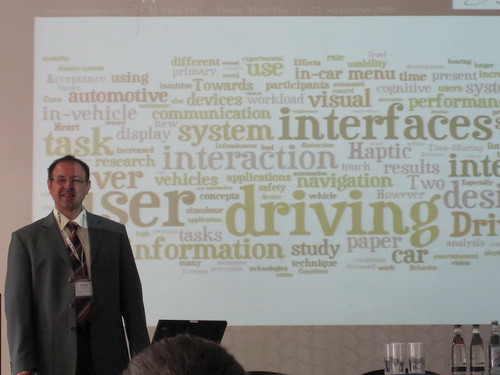During the 2009-2010 academic year I taught a new version of the UNH ECE Graduate Seminar (ECE 900), a course I first introduced in the fall of 2002. The primary aim of the previous version of the course was to expose our graduate students to research and development conducted at other institutions. Thus, the course consisted of eight invited talks per semester, given by engineers, scientist and other professionals, and covering a range of topics of interest to ECE students.
Starting with the 2009-2010 academic year the primary aim of the course has become to introduce graduate students to the general tools of scientific research. I championed this new aim for the course and I’m grateful that my faculty colleagues gave me an opportunity to share my excitement about scientific research with our graduate students.
The course had three main aspects:
- Lectures on performing scientific research. My lectures introduced students to the steps of scientific research, from formulating problems, to proposing hypotheses and conducting experiments.
- Research talks. Each student attended at least 15 talks. Most of these were held at UNH and the speakers were exceptional. At the same time, I encouraged the students to recommend talks that we can attend at other institutions. The result: trips to MIT, BU and WPI.
- Research proposal. At the end of the two semester sequence each student submitted a short research proposal and gave a presentation on the same. The proposals were developed over the two semesters, with students working individually and in groups. I provided feedback throughout the year on different segments of the proposal.
In an informal survey at the end of the academic year most students indicated that they liked the new version of the ECE Graduate Seminar and that they thought it was useful. All of the students thought that learning about the tools of science is useful and the majority also indicated that their technical writing skills improved due to this course. These responses are certainly encouraging.
I will be teaching ECE 900 again during the 2010-2011 academic year. Based on my experiences reported here, as well as those with my Fundamentals of Ubicomp course, I plan to implement two changes:
- Accelerate proposal development. I will move up the due date for the final research proposal to sometime early in the second semester. The accelerated schedule should help build excitement for learning about science. It will also give us time at the end of the year to discuss how other researchers approach scientific work. Finally, it will help with student participation in the course, which is the subject of the second change I intend to implement.
- Increase student participation. While I encouraged student participation throughout the semester, the results were not always stellar. By accelerating the proposal development process I hope to provide students with discussion topics that they feel comfortable talking about. I also intend to ask students to hold multiple formal presentations in class. One assignment that students can expect next semester: create a 15 minute presentation about a research topic of your choice, based on a research video posted online.



 I also had a chance to give a talk reviewing some of the results of my collaboration with
I also had a chance to give a talk reviewing some of the results of my collaboration with  On June 7 and 8, 2010 I visited the
On June 7 and 8, 2010 I visited the 